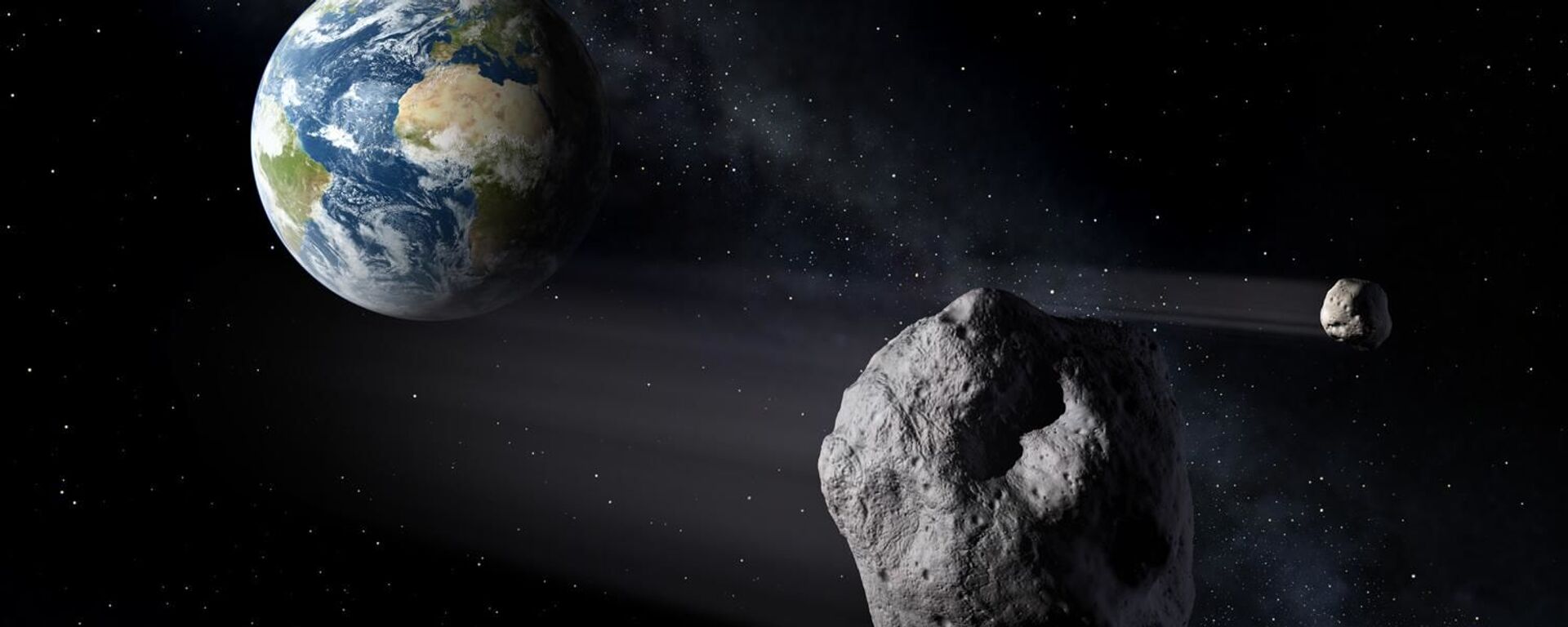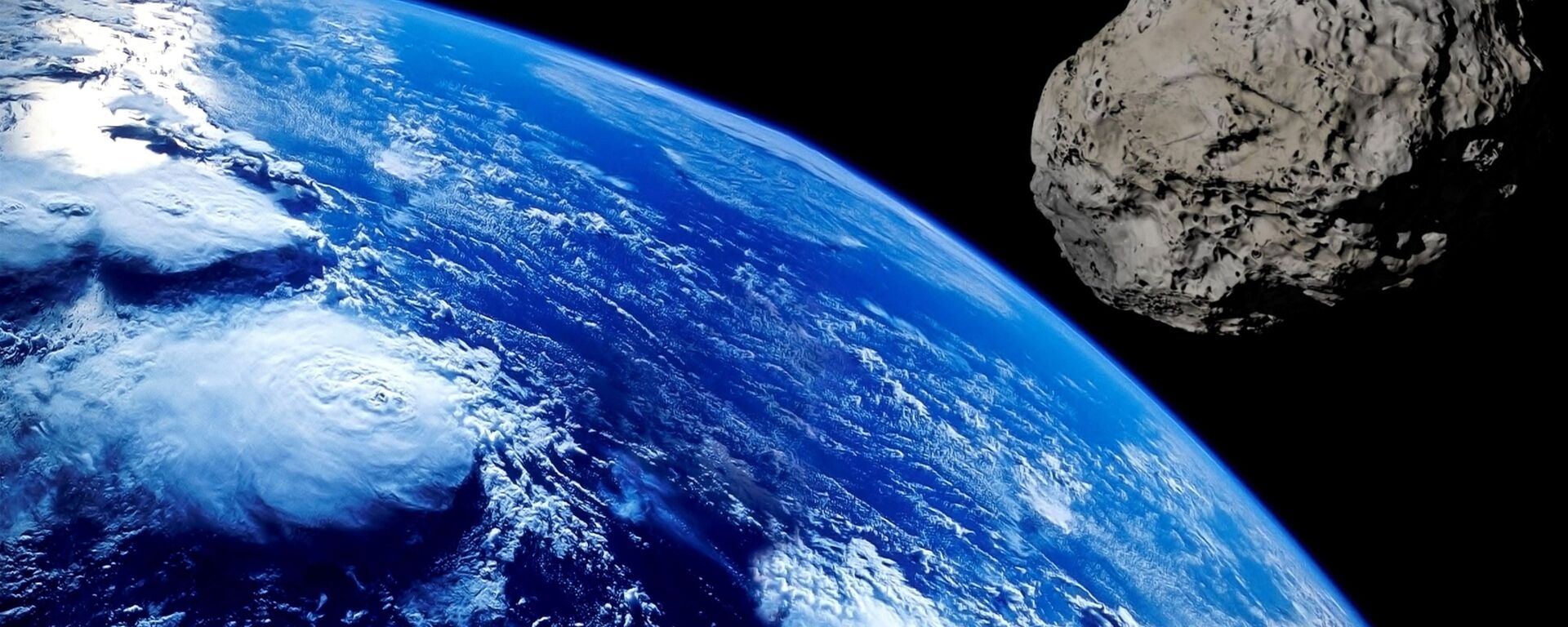https://sputnikglobe.com/20220131/acid-rain-multi-year-winters-tsunamis-everything-to-brace-for-if-giant-asteroid-hits-earth-1092637596.html
Acid Rain, Multi-Year Winter, Tsunamis: Everything to Brace for If Giant Asteroid Hits Earth
Acid Rain, Multi-Year Winter, Tsunamis: Everything to Brace for If Giant Asteroid Hits Earth
Sputnik International
Scientists believe there is a chance that humanity will be able to survive the cataclysms caused by the impact of a large asteroid or a comet, and, possibly... 31.01.2022, Sputnik International
2022-01-31T12:19+0000
2022-01-31T12:19+0000
2023-04-12T16:57+0000
world
asteroid
comet
space
https://cdn1.img.sputnikglobe.com/img/101327/95/1013279588_0:181:1911:1256_1920x0_80_0_0_7e9de3500281fb2da15e0068151b034b.jpg
Despite being satirical in nature, Netflix's recent hit "Don't Look Up" was realistic in one aspect – describing the real danger of a giant space object such as an asteroid or a comet hitting Earth. Naturally, real world governments might not be as dysfunctional in addressing the issue as the ones shown in the film, but even then there are no guarantees they will be able to deal with a really large comet targeting Earth.So, What Happens If It Hits the Planet?The outcome of such an impact mainly depends on the size of the space object. Anything smaller than 0.4 kilometres should not give us much trouble. The one shown in the Netflix film was 10 kilometres wide and is similar to the asteroid that hit Earth over 66 million years ago and presumably wiped out the dinosaurs.The estimates of its impact vary between 21 and 921 billion equivalents of the nuclear bomb dropped on Hiroshima or around 100 million "Tsar Bombs" – the most powerful nuke ever detonated. If another asteroid like that hits Earth, it will create wildfires, huge impact waves, and enormous tsunamis if it lands in water or close by. The ash created by the fires and raised by the impact would cause global acid rain.But probably most importantly, the ash and smoke would start blocking the Sun from breaching the skies, meaning that humanity will face several years of unending winter, as professor of physics and astronomy at Beloit College, Britt Scharringhausen, explained in his interview with the online media outlet Inverse.While the impact will be severe, it will likely not kill all life on the planet – after all several species, including avian creatures, survived it last time 66 million years ago. But the endless winter is bound to create food problems for survivors as crops won't be able to grow anywhere but specially created biodomes and greenhouses.Once the ash clears and winter ends, farming can be done as before the impact should agricultural seeds survive.How Can We Survive or Prevent This?Being as far away as possible from the projected impact site should help for starters since no bunker will help you survive a blast from a 10-kilometre-wide space object. Yet, getting oneself a bunker stocked with food would be a plus if you can ration the latter carefully.Preventing such an extinction-level event is another thing. Right now, the only defence we have is monitoring systems that track a major portion of potential space threats to Earth. The system is not ideal, however, and recently missed a large comet that skimmed past Earth at a distance less than that between our planet and the Moon.NASA is currently working on the Double Asteroid Redirection Test (DART) – a prototype technology to alter the course of dangerous asteroids and comets by hitting them with special spacecraft. One such test is expected to take place in September.Netflix's film also prompted a group of researchers from the University of California to write a scientific paper called "Don't Forget To Look Up" in which they analysed how governments around the world could avert the threat shown in the movie. According to them, Earth already has sufficient technology to send several nukes to the space object in order to break it up into numerous smaller ones. They would mostly burn in the atmosphere without harming the planet.Yet, this method requires a comet or an asteroid to be spotted no later than six months before impact. Anything less and Earth won't have enough time to send the nuclear devices and safely break it up in space.
https://sputnikglobe.com/20200824/video-russias-rosatom-releases-new-footage-of-tsar-bomba-worlds-most-powerful-nuclear-bomb-1080266347.html
https://sputnikglobe.com/20220116/do-look-up-some-asteroids-can-creep-up-on-earth-undetected-nasa-warns-1092296515.html
https://sputnikglobe.com/20211124/nasa-fires-off-first-ever-planetary-defense-test-with-asteroid-bound-dart-spacecraft-1090973867.html
Sputnik International
feedback@sputniknews.com
+74956456601
MIA „Rossiya Segodnya“
2022
Tim Korso
https://cdn1.img.sputnikglobe.com/img/07e6/03/0d/1093831826_0:0:216:216_100x100_80_0_0_e3f43a960af0c6c99f7eb8ccbf5f812c.jpg
Tim Korso
https://cdn1.img.sputnikglobe.com/img/07e6/03/0d/1093831826_0:0:216:216_100x100_80_0_0_e3f43a960af0c6c99f7eb8ccbf5f812c.jpg
News
en_EN
Sputnik International
feedback@sputniknews.com
+74956456601
MIA „Rossiya Segodnya“
Sputnik International
feedback@sputniknews.com
+74956456601
MIA „Rossiya Segodnya“
Tim Korso
https://cdn1.img.sputnikglobe.com/img/07e6/03/0d/1093831826_0:0:216:216_100x100_80_0_0_e3f43a960af0c6c99f7eb8ccbf5f812c.jpg
asteroid, comet, space
Acid Rain, Multi-Year Winter, Tsunamis: Everything to Brace for If Giant Asteroid Hits Earth
12:19 GMT 31.01.2022 (Updated: 16:57 GMT 12.04.2023) Scientists believe there is a chance that humanity will be able to survive the cataclysms caused by the impact of a large asteroid or a comet, and, possibly outright prevent it from ever happening in the first place.
Despite being satirical in nature, Netflix's recent hit "Don't Look Up" was realistic in one aspect – describing the real danger of a giant space object such as an asteroid or a comet hitting Earth. Naturally, real world governments might not be as dysfunctional in addressing the issue as the ones shown in the film, but even then there are no guarantees they will be able to deal with a really large comet targeting Earth.
So, What Happens If It Hits the Planet?
The outcome of such an impact mainly depends on the size of the space object. Anything smaller than 0.4 kilometres should not give us much trouble. The one shown in the Netflix film was 10 kilometres wide and is similar to the asteroid that hit Earth over 66 million years ago and presumably wiped out the dinosaurs.
The estimates of its impact vary between 21 and 921 billion equivalents of the nuclear bomb dropped on Hiroshima or around 100 million "Tsar Bombs" – the most powerful nuke ever detonated. If another asteroid like that hits Earth, it will create wildfires, huge impact waves, and enormous tsunamis if it lands in water or close by. The ash created by the fires and raised by the impact would cause global acid rain.

24 August 2020, 19:00 GMT
But probably most importantly, the ash and smoke would start blocking the Sun from breaching the skies, meaning that humanity will face several years of unending winter, as professor of physics and astronomy at Beloit College, Britt Scharringhausen, explained in his interview with the online media outlet Inverse.
"All of the ash from the fires and all of the finer-grain debris from the impact will hang out in the atmosphere for a long time, and we get what's called an impact winter. It's going to block the sunlight, and all that ash falling into the ocean acidifies the top layers".
While the impact will be severe, it will likely not kill all life on the planet – after all several species, including avian creatures, survived it last time 66 million years ago. But the endless winter is bound to create food problems for survivors as crops won't be able to grow anywhere but specially created biodomes and greenhouses.
Once the ash clears and winter ends, farming can be done as before the impact should agricultural seeds survive.
How Can We Survive or Prevent This?
Being as far away as possible from the projected impact site should help for starters since no bunker will help you survive a blast from a 10-kilometre-wide space object. Yet, getting oneself a bunker stocked with food would be a plus if you can ration the latter carefully.
Preventing such an extinction-level event is another thing. Right now, the only defence we have is monitoring systems that track a major portion of potential space threats to Earth. The system is not ideal, however, and recently missed a large comet that skimmed past Earth at a distance less than that between our planet and the Moon.

16 January 2022, 12:57 GMT
NASA is currently working on the Double Asteroid Redirection Test (DART) – a prototype technology to alter the course of dangerous asteroids and comets by hitting them with special spacecraft. One such test is expected to take place in September.
Netflix's film also prompted a group of researchers from the University of California to write a scientific paper called
"Don't Forget To Look Up" in which they analysed how governments around the world could avert the threat shown in the movie. According to them, Earth already has sufficient technology to send several nukes to the space object in order to break it up into numerous smaller ones. They would mostly burn in the atmosphere without harming the planet.

24 November 2021, 05:32 GMT
Yet, this method requires a comet or an asteroid to be spotted no later than six months before impact. Anything less and Earth won't have enough time to send the nuclear devices and safely break it up in space.






